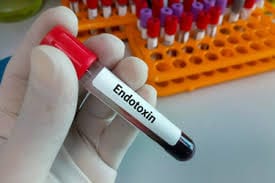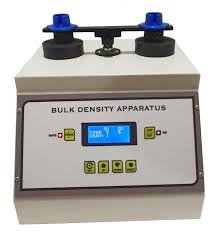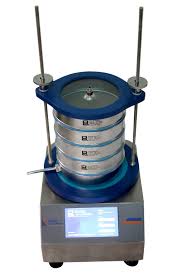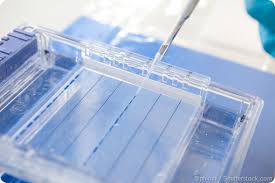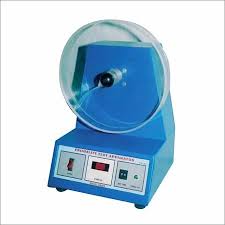|
Getting your Trinity Audio player ready... |
Q4b(R1) Evaluation And Recommendation Of Pharmacopoeial Texts For Use In The ICH Regions
Q4b(R1) Pharmacopoeial Texts: The implementation of this annex will be carried out in stages across the different ICH regions. Once this annex is incorporated into the regulatory process at ICH Step 5, it will become available for use in the respective regions. However, the timeline for its implementation may vary across the regions, as different regulatory bodies may require different timelines to update their national pharmacopoeias or regulatory guidelines to accommodate these changes.
Q4B ANNEX 1(R1) Residue on Ignition/Sulphated Ash General Chapter:Q4b(R1)
- Introduction
The annex presented here represents the outcome of the Q4B process for Residue on Ignition and Sulphated Ash. This process aims to harmonize the requirements of the pharmaceutical industry across different regions, ensuring consistency and facilitating global standardization. The proposed textual amendments and harmonization efforts were initiated by the Pharmacopoeial Discussion Group (PDG), which is a collective of experts from different regional pharmacopoeial organizations working toward global alignment of pharmaceutical quality standards. The goal of this annex is to clarify how the Residue on Ignition (ROA) and Sulphated Ash tests, which are commonly used to determine the inorganic residue left after the combustion of a substance, can be universally applied across various regions while adhering to regional regulatory guidelines.
- Q4B Outcome
The Q4B process is an initiative under the International Council for Harmonisation of Technical Requirements for Pharmaceuticals for Human Use (ICH), aimed at facilitating the use of common standards across different regions for pharmaceutical testing methods. This annex discusses the recommendations put forward by the ICH Steering Committee, based on the evaluation performed by the Q4B Expert Working Group (EWG), which have implications for the interchangeability of specific pharmacopoeial methods used for the Residue on Ignition and Sulphated Ash tests.
2.1 Analytical Procedures
One of the primary outcomes of the Q4B evaluation is the recognition that the official pharmacopoeial texts from different regions—the European Pharmacopoeia (Ph.Eur. 20414), the Japanese Pharmacopoeia (JP 2.44), and the United States Pharmacopeia (USP <281>)—are interchangeable for the purposes of Residue on Ignition and Sulphated Ash tests. This interchangeability is recommended under the following conditions:
- Sample Weight: Unless otherwise specified in a monograph, an appropriate sample weight should be chosen for testing. Typically, a sample weight in the range of 1 to 2 grams is recommended. This amount should result in a residue that is sufficient to be accurately measured by weight (typically to an accuracy of 1 mg). In cases where a specific sample weight is not indicated in the monograph, the manufacturer or sponsor must justify their choice of sample weight in the application dossier, specifying both the sample weight and the acceptance criteria.
- Calibration of the Muffle Furnace: The muffle furnace used for conducting the test should be appropriately calibrated to ensure compliance with regional Good Manufacturing Practice (GMP) requirements. This is necessary to guarantee the reliability and consistency of the results obtained from the test. Proper calibration ensures that the furnace is functioning within the required temperature range and that it can provide consistent results across different testing conditions.
2.2 Acceptance Criteria
During the evaluation process, it was noted that the proposed texts for Residue on Ignition and Sulphated Ash did not contain explicit acceptance criteria. While acceptance criteria are essential in many pharmacopoeial tests to ensure that the results meet the necessary quality standards, this omission in the proposed texts highlights the need for regional authorities to adapt and incorporate specific criteria into their guidelines or monographs as applicable.
Acceptance criteria for any analytical test typically specify the allowable limits for a substance’s residue, ensuring that it falls within acceptable thresholds. For instance, for the Residue on Ignition test, this could involve limits on the amount of inorganic residue left after combustion, while for Sulphated Ash, it could refer to the amount of ash after treatment with sulfuric acid. The absence of such criteria in the texts evaluated by the Q4B EWG suggests that further discussion may be required among regulatory authorities to establish uniform criteria.
Q4B Annex 2(R1) Test for Extractable Volume of Parenteral Preparations
- Introduction
The Q4B Annex 2(R1) document represents the culmination of the Q4B process for the “Test for Extractable Volume of Parenteral Preparations.” The Q4B initiative is a part of the ongoing work led by the International Council for Harmonisation (ICH) to align the pharmacopeial standards across various regions to ensure consistent quality control and regulatory compliance in the global pharmaceutical industry. This annex was developed through collaboration with the Pharmacopoeial Discussion Group (PDG), a partnership involving experts from Europe, Japan, the United States, and other regions. Their goal was to harmonize the approach to testing the extractable volume of parenteral preparations (i.e., injectable medications) across these major pharmacopeias, which are critical in ensuring the safety, efficacy, and quality of medicinal products.
This annex specifically addresses the “Test for Extractable Volume of Parenteral Preparations” in the context of global harmonization. It outlines the equivalency and interchangeability of official texts from major pharmacopoeias, including the European Pharmacopoeia (Ph. Eur.), Japanese Pharmacopoeia (JP), and the United States Pharmacopeia (USP). As injectable preparations play a vital role in patient care, ensuring that the volume extracted from containers meets specific criteria is essential for maintaining both the efficacy and safety of these pharmaceutical products.
- Q4B Outcome
2.1 Analytical Procedures
The Q4B Expert Working Group (EWG), which evaluated the texts in this annex, concluded that the analytical procedures outlined in the pharmacopoeial monographs are interchangeable across different ICH regions. The three key pharmacopoeias involved in this evaluation—the European Pharmacopoeia (Ph. Eur.), the Japanese Pharmacopoeia (JP), and the United States Pharmacopeia (USP)—each have their own official texts governing the “Test for Extractable Volume of Parenteral Preparations.” However, the Q4B EWG determined that these texts are essentially equivalent, meaning they can be used interchangeably across the regions.
The ICH Steering Committee, based on this evaluation, recommends the following pharmacopoeial texts as interchangeable for the test:
- Ph. Eur.: 2.9.17 Test for Extractable Volume of Parenteral Preparations.
- JP: 6.05 Test for Extractable Volume of Parenteral Preparations.
- USP: Section titled “Volume in Containers” in the Injections General Chapter.
These texts should be considered equivalent when used in regulatory applications, as they set forth the same testing methodology and acceptance criteria for determining the extractable volume of parenteral preparations.
2.2 Acceptance Criteria
In all three pharmacopoeias—the European Pharmacopoeia (Ph. Eur.), Japanese Pharmacopoeia (JP), and the United States Pharmacopeia (USP)—the acceptance criteria for the test for extractable volume are identical. This uniformity in criteria ensures consistency in the regulatory framework and facilitates the harmonization process across different regions.
Q4B Annex 3 (R1):Test for Particulate Contamination: Sub-Visible Particles Chapter
- Introduction
This annex is the result of the Q4B evaluation process for the test concerning particulate contamination in parenteral products, specifically sub-visible particles. The Q4B process, established by the International Council for Harmonisation (ICH), aims to harmonize testing and regulatory requirements across different regions for pharmaceutical products. The proposed texts for the annex were submitted by the Pharmacopoeial Discussion Group (PDG), a collaborative body composed of representatives from pharmacopoeias worldwide.
The annex focuses on standardizing the test for sub-visible particulate contamination, a critical factor in ensuring the safety and quality of injectable pharmaceutical products. Particulate contamination, especially sub-visible particles, can pose significant risks to patients, including inflammatory responses, embolism, or other adverse effects when injected into the bloodstream. Therefore, the harmonization of methods for detecting and quantifying these particles is crucial for global pharmaceutical standards.
- Q4B Outcome
The Q4B process culminated in an evaluation by the ICH Steering Committee, which, based on the recommendations of the Q4B Expert Working Group (EWG), has provided guidance on how to align the pharmacopeial standards of different regions for testing particulate contamination in parenteral products. The official pharmacopoeial texts under consideration for interchangeability are:
- European Pharmacopoeia (Ph.Eur.) 2.9.19: Particulate Contamination: Sub-visible Particles
- Japanese Pharmacopoeia (JP) 6.07: Insoluble Particulate Matter Test for Injections
- United States Pharmacopeia (USP) <788>: Particulate Matter in Injections
The evaluation and recommendations emphasize the need for consistency across the ICH regions in terms of analytical procedures and acceptance criteria. However, several important conditions must be met for the texts to be considered interchangeable across these regions.
2.1 Analytical Procedures
The ICH Steering Committee recommends that the pharmacopoeial texts referenced above can be used interchangeably in all ICH regions, provided certain conditions are fulfilled. Specifically, instrument calibration and system suitability tests must adhere to the respective regional Good Manufacturing Practice (GMP) guidelines. This ensures that the testing equipment and procedures used for detecting particulate contamination are suitable and reliable for pharmaceutical production in each region.
Manufacturers must comply with the regional GMP requirements to ensure the validity and consistency of the results, regardless of the specific pharmacopoeial text being followed. This harmonized approach will help streamline the testing process for particulate contamination and facilitate global trade and product development.
2.2 Acceptance Criteria
While the proposed analytical procedures for particulate contamination are generally interchangeable across regions, there is an important distinction when it comes to the acceptance criteria for parenteral products, especially those with a nominal volume of 100 milliliters (mL). The criteria set forth in the Japanese Pharmacopoeia (JP) are more stringent than those in the European Pharmacopoeia (Ph.Eur.) and the United States Pharmacopeia (USP) for products of this volume. Therefore, for nominal 100-mL parenteral products, the acceptance criteria from the JP are not considered interchangeable with the other two pharmacopoeias.
This difference in acceptance criteria for the 100-mL nominal volume reflects the varying regulatory standards in each region. Manufacturers must be mindful of these variations when conducting particulate contamination tests, particularly for larger-volume parenteral products, as different regions may require compliance with distinct standards for acceptance.
Q4B Annex 4A(R1)Microbiological Examination of Non-Sterile Products: Microbial Enumeration Tests –
- Introduction
This document represents the outcome of the Q4B process concerning the microbiological examination of non-sterile products, specifically focusing on microbial enumeration tests. These tests are an essential part of ensuring the safety and quality of non-sterile pharmaceutical products. The proposed guidelines were submitted by the Pharmacopoeial Discussion Group (PDG), a collaborative effort between international pharmacopoeias, and are designed to harmonize the microbial examination practices used in different regions.
The importance of standardizing microbiological testing methods cannot be overstated, as microbial contamination can pose significant health risks. The guidelines aim to ensure consistency and reliability in microbial enumeration testing procedures across various regulatory environments. By adopting these standardized methods, manufacturers, regulatory authorities, and other stakeholders can have confidence that the testing processes used meet high international standards.
- Q4B Outcome
2.1 Analytical Procedures
The International Council for Harmonisation (ICH) Steering Committee, following an evaluation by the Q4B Expert Working Group (EWG), has recommended the adoption of the following pharmacopoeial texts for microbiological enumeration tests as interchangeable within ICH regions:
- European Pharmacopoeia (Ph. Eur.) 2.6.12 – Microbiological Examination of Non-Sterile Products: Microbial Enumeration Tests
- Japanese Pharmacopoeia (JP) 4.05 – Microbiological Examination of Non-Sterile Products: I. Microbiological Examination of Non-Sterile Products: Microbial Enumeration Tests
- United States Pharmacopeia (USP) <61> – Microbiological Examination of Non-Sterile Products: Microbial Enumeration Tests
These texts provide a common framework for testing procedures, ensuring that the methods used in different regions are aligned. Manufacturers can rely on any of these texts, knowing that they will fulfill regulatory requirements for microbial enumeration testing in the respective regions.
2.2 Acceptance Criteria
The proposed texts evaluated in this annex did not include specific acceptance criteria. This omission is likely due to the nature of the tests themselves, which focus primarily on the enumeration of microbial populations in non-sterile products. Acceptance criteria for microbial contamination are typically defined based on the intended use of the product, its regulatory classification, and the microbial limits prescribed by relevant health authorities.
While the annex provides guidelines for the conduct of microbial enumeration tests, it does not establish strict thresholds for acceptable microbial levels. These criteria must still be defined by local or regional authorities, based on the type of product being tested and the specific health risks associated with microbial contamination.
Q4B ANNEX 4B(R1) MICROBIOLOGICAL EXAMINATION OF NON-STERILE PRODUCTS: TESTS FOR SPECIFIED MICRO-ORGANISMS
- INTRODUCTION
The concept of microbiological examination of non-sterile products is an essential component of pharmaceutical quality control to ensure that products are free from harmful microorganisms that could pose a risk to patient health. The process involves evaluating non-sterile products for specific types of microorganisms that may be present, ensuring they meet the safety standards required by regulatory agencies.
This document, specifically addressing the tests for specified microorganisms, has been developed through the Q4B process, which facilitates the harmonization of guidelines and standards across the global pharmaceutical industry. The outcome of this process provides a unified approach to microbiological testing for non-sterile products and serves as a valuable resource for manufacturers and regulatory bodies to ensure consistent product quality.
The annex at hand results from the collaborative efforts of the Pharmacopoeial Discussion Group (PDG) under the International Council for Harmonisation (ICH) framework. The PDG has worked meticulously to align and standardize the pharmacopoeial texts of various regions, ensuring that non-sterile products are uniformly assessed for specified microorganisms in accordance with the highest standards of safety.
- Q4B OUTCOME
2.1 Analytical Procedures
The ICH Steering Committee, in consultation with the Q4B Expert Working Group (EWG), has reviewed and evaluated several official pharmacopoeial texts regarding microbiological testing of non-sterile products. After comprehensive evaluation, it was concluded that the pharmacopoeial texts of the European Pharmacopoeia (Ph. Eur.), the Japanese Pharmacopoeia (JP), and the United States Pharmacopeia (USP) can be used interchangeably in the ICH regions.
The official texts that have been identified as interchangeable include:
- Ph.Eur. 2.6.13: Microbiological Examination of Non-Sterile Products: Tests for Specified Microorganisms
- JP 4.05: Microbiological Examination of Non-Sterile Products: II. Microbiological Examination of Non-Sterile Products: Tests for Specified Microorganisms
- USP <62>: Microbiological Examination of Non-Sterile Products: Tests for Specified Microorganisms
This alignment means that manufacturers and regulatory authorities can rely on any of these pharmacopoeial standards when evaluating non-sterile products for microbial content, promoting global consistency in pharmaceutical testing.
2.2 Acceptance Criteria
It is important to note that the proposed texts evaluated in this process did not include specific acceptance criteria for microbiological testing. While this omission does not undermine the overall effectiveness of the harmonized guidelines, it does necessitate that regulatory bodies and manufacturers rely on established regional criteria for microbiological testing to ensure product compliance with safety and quality standards.
The absence of explicit acceptance criteria in the evaluated texts means that each region must determine the threshold levels for microbial contamination in non-sterile products based on their own regulatory requirements. Manufacturers will also need to adapt their procedures to ensure that they meet the relevant regional acceptance criteria.
Q4B Annex 4C(R1) Microbiological Examination of Non-Sterile Products: Acceptance Criteria for Pharmaceutical Preparations and Substances for Pharmaceutical Use
- Introduction
This annex outlines the outcomes of the Q4B process related to the microbiological examination of non-sterile products, with a focus on establishing acceptance criteria for pharmaceutical preparations and substances intended for pharmaceutical use. The document’s purpose is to ensure consistency and regulatory alignment across different pharmacopoeial texts used in various regions.
The texts presented in this annex are not mandatory for regulatory compliance; instead, they serve as informational guidelines for stakeholders involved in the development, manufacturing, and testing of non-sterile pharmaceutical products. It is essential to note that these recommendations aim to harmonize microbiological quality standards across global markets. The proposed documents were submitted by the Pharmacopoeial Discussion Group (PDG), a consortium of pharmacopoeial authorities working together to promote international standardization.
- Q4B Outcome
The International Council for Harmonisation (ICH) Steering Committee, following the review process conducted by the Q4B Expert Working Group (EWG), has formally recommended that the official pharmacopoeial texts, namely:
- European Pharmacopoeia (Ph.Eur.) 5.1.4: “Microbiological Quality of Non-Sterile Pharmaceutical Preparations and Substances for Pharmaceutical Use”
- Japanese Pharmacopoeia (JP) General Information 12: “Microbial Attributes of Non-Sterile Pharmaceutical Products”
- United States Pharmacopeia (USP) <1111>: “Microbiological Attributes of Non-Sterile Pharmaceutical Products”
should be considered interchangeable in the regions governed by the ICH. This recommendation ensures that pharmaceutical companies and regulatory bodies can rely on these texts for microbiological quality assessments, regardless of the specific regional pharmacopoeia they adhere to. The harmonization of these texts fosters consistency in regulatory practices and facilitates international trade of pharmaceutical products.
Q4B Annex 5 (R1) General Chapter on Disintegration Test –
- Introduction
This annex is part of the Q4B process aimed at harmonizing the Disintegration Test General Chapter. The content of this document was compiled by the Pharmacopoeial Discussion Group (PDG). The goal is to standardize methods and provide consistency across the international pharmacopoeial systems, particularly in the context of the Disintegration Test for tablets and capsules. The annex serves as a reference for how these testing procedures can be harmonized across different regions.
- Q4B Outcome
2.1 Analytical Procedures
The International Council for Harmonisation (ICH) Steering Committee, following a comprehensive evaluation by the Q4B Expert Working Group (EWG), has provided recommendations regarding the use of official pharmacopoeial texts in relation to the disintegration tests for tablets and capsules. Specifically, the following pharmacopoeial references can be considered interchangeable within the ICH regions, subject to certain conditions:
- European Pharmacopoeia (Ph. Eur.): 2.9.1 Disintegration of Tablets and Capsules.
- Japanese Pharmacopoeia (JP): 6.09 Disintegration Test.
- United States Pharmacopeia (USP): Revision Bulletin <701> Disintegration.
However, it is important to note that testing conditions tailored for specific dosage forms are beyond the scope of this annex and the harmonization effort.
2.1.1 Exception for Large Tablets and Capsules
Tablets and capsules that exceed 18 millimeters (mm) in length and require the use of a different disintegration apparatus are excluded from the scope of harmonization. For these forms, the disintegration tests are not considered interchangeable across the three regions. Special apparatus requirements may necessitate region-specific testing protocols.
2.1.2 Special Dosage Forms
For dosage forms classified as delayed-release, gastro-resistant, or enteric-coated—according to the terminology used in the regional compendia—the Disintegration Test described in this annex is not applicable or interchangeable across the ICH regions. These forms are typically subject to different testing conditions, reflecting their specific release mechanisms and formulations.
2.1.3 Product-Specific Parameters
When applying the harmonized disintegration test, product-specific parameters—such as the choice of medium or the inclusion of discs—must be defined in the application dossier. These factors can influence the performance of the test and must be tailored to the specific characteristics of the product being tested.
2.2 Acceptance Criteria
The harmonization of acceptance criteria for the disintegration test is outside the scope of this annex. The relevant acceptance criteria should be clearly outlined in the application dossier submitted for regulatory approval, taking into account the specific requirements of each region and the characteristics of the product.
Q4B Annex 6 Uniformity of Dosage Units: General Chapter Q4b(R1)
- Introduction
This document represents the outcome of the Q4B evaluation process for the Uniformity of Dosage Units General Chapter. The annex describes the findings and recommendations resulting from the efforts to harmonize standards across various pharmacopoeias. It is a product of the Pharmacopoeial Discussion Group (PDG) and serves to ensure that uniformity in dosage units is consistently maintained across different regions.
The primary purpose of this annex is to present a set of aligned guidelines that can be used universally across various pharmacopeial standards to help ensure that dosage forms contain a consistent amount of active pharmaceutical ingredients (APIs) within specified limits. By standardizing the criteria for uniformity, this harmonization aims to improve the safety, efficacy, and quality of pharmaceutical products globally.
- Q4B Outcome
2.1 Analytical Procedures
The International Council for Harmonisation (ICH) Steering Committee reviewed the findings of the Q4B Expert Working Group (EWG) and provided the following recommendations for regulatory practices regarding the uniformity of dosage units. The committee concluded that the official pharmacopoeial texts, specifically the European Pharmacopoeia (Ph. Eur.) Chapter 2.9.40, Japanese Pharmacopoeia (JP) 6.02, and United States Pharmacopeia (USP) General Chapter <905> can be used interchangeably in regions adhering to ICH guidelines, provided certain conditions are met.
2.1.1 Mass/Weight Variation Test
The Mass/Weight Variation test can serve as an alternative to the Content Uniformity Test, but it is only applicable if certain criteria are met. Specifically, for products where the active ingredient dose is under 25 mg or if the variation exceeds 25%, the Mass/Weight Variation test is not interchangeable in all ICH regions. Therefore, the Content Uniformity Test remains the preferred method unless the threshold limit is met.
2.1.2 Specific Dosage Forms
Certain dosage forms that are included in the local pharmacopoeial texts, indicated by black diamond symbols, are not considered interchangeable for the Uniformity of Dosage Units test in all ICH regions. These symbols denote specific cases where regional differences may apply and where consistency in the testing methods must be maintained according to the local pharmacopoeial standard.
2.1.3 Correction Factor for Assays
In cases where different testing procedures are applied for the assay of the preparation and the Content Uniformity Test, it may be necessary to apply a correction factor. This correction factor must be clearly specified and justified within the application dossier. The correction ensures that any discrepancies between the testing methods are accounted for, maintaining consistency in the final analysis.
2.2 Acceptance Criteria
The acceptance criteria for uniformity of dosage units are harmonized across the three main pharmacopoeias: the European Pharmacopoeia, the Japanese Pharmacopoeia, and the United States Pharmacopeia. This means that the thresholds and acceptable limits for variability are consistent across these authoritative sources, ensuring uniformity and compliance in different regions. By harmonizing these criteria, the aim is to simplify the regulatory process for manufacturers and regulators alike, facilitating international trade and manufacturing consistency.
Q4B ANNEX 7(R2) DISSOLUTION TEST GENERAL CHAPTER Q4b(R1)
- INTRODUCTION
This annex has been developed as part of the Q4B process concerning the Dissolution Test. The proposed texts within this document were submitted by the Pharmacopoeial Discussion Group (PDG), which is responsible for the evaluation and harmonization of pharmacopoeial standards across different regions. The Q4B initiative aims to promote consistency in the use of analytical methods, ensuring that the dissolution test procedure used across different ICH (International Council for Harmonisation of Technical Requirements for Pharmaceuticals for Human Use) regions is scientifically sound and consistent.
- Q4B OUTCOME Q4b(R1)
2.1 Analytical Procedures
The ICH Steering Committee, after reviewing the findings of the Q4B Expert Working Group (EWG), recommends that the dissolution test procedures specified in the pharmacopoeial texts of the European Pharmacopoeia (Ph.Eur.), the Japanese Pharmacopoeia (JP), and the United States Pharmacopeia (USP) are interchangeable across ICH regions under certain conditions. These documents outline the standards for the dissolution test for solid dosage forms, which is a crucial test used to evaluate the release of the active pharmaceutical ingredient (API) from a drug product.
The specific texts recommended for interchangeability include: Q4b(R1)
- Ph.Eur. 2.9.3: Dissolution Test for Solid Dosage Forms
- JP 6.10: Dissolution Test
- USP <711>: Dissolution
However, this interchangeability is subject to the following conditions:
2.1.1 Applicability of Apparatus Types
The interchangeability applies to the use of three types of dissolution apparatus: the Basket Apparatus (Apparatus 1), the Paddle Apparatus (Apparatus 2), and the Flow-Through Cell. However, the Flow-Through Cell needs to be identified by an unambiguous descriptive title or a specific compendial reference in the application dossier because the apparatus is referred to by different numbers in the three pharmacopoeias. This ensures that there is no confusion when referring to the apparatus in the regional regulatory documents.
2.1.2 Enzyme Use Exclusion
The dissolution test procedure is not considered interchangeable across the ICH regions when enzymes are used in the dissolution media. The presence of enzymes could introduce variability in the dissolution profiles, making it more difficult to ensure consistency and accuracy across the different pharmacopoeial methods. As such, any dissolution tests involving enzymes must be treated as separate from those that do not involve enzymes, and they should be carefully specified in the relevant application.
2.1.3 Calibration and Compliance with GMP
The dissolution apparatus should undergo appropriate calibration to ensure that it is in compliance with regional Good Manufacturing Practice (GMP) requirements. For example, a robust and properly executed mechanical calibration procedure should be followed to guarantee that the dissolution apparatus meets the necessary performance standards. Adhering to GMP guidelines helps to ensure that the test is reliable and reproducible.
2.1.4 Dosage Forms with Special Coatings Q4b(R1)
Dissolution testing is not considered interchangeable for dosage forms categorized as delayed-release, gastro-resistant, or enteric-coated according to the regional compendia. These dosage forms are designed to release their active ingredients under specific conditions, and therefore, their dissolution characteristics might vary significantly from those of standard dosage forms. As a result, special considerations must be made when performing dissolution tests on these types of dosage forms.
2.1.5 Validation of Thermometer Use Q4b(R1)
Validation studies must be conducted to demonstrate that the test results are not negatively affected if the thermometer is left in the dissolution vessel. This is important to ensure that the dissolution test adheres to regional GMP requirements. The proper calibration and operation of temperature-measuring equipment are vital to ensuring the accuracy of the test results.
2.1.6 Exclusion of JP Interpretation 2 Q4b(R1)
Dissolution tests are not considered interchangeable in the ICH regions when based on JP Interpretation 2. This interpretation refers to a specific condition that is not uniformly applied across other pharmacopoeial texts, and as such, it is excluded from the standard interchangeability considerations.
2.1.7 Large Vessel Exclusion Q4b(R1)
The dissolution test is not considered interchangeable when using large dissolution vessels (greater than 1 liter). The size of the vessel can significantly impact the dissolution process and, therefore, it is not suitable for comparison across different pharmacopoeial standards without taking specific considerations into account.
2.1.8 Product-Specific Parameters Q4b(R1)
Each dissolution test must specify and justify product-specific parameters, including the dissolution media, stirring rate, sampling time, and the type of sinkers used. These parameters should be thoroughly outlined in the application dossier to ensure that the dissolution process is appropriately tailored to the specific drug product being tested.
2.2 Acceptance Criteria
The acceptance criteria for the dissolution test should be clearly specified in the application dossier. These criteria must ensure that the dissolution profile is consistent and meets the expected standards for the specific dosage form being evaluated. The acceptance criteria are an essential part of regulatory compliance and must be defined in the regulatory submissions for each product.
Q4B Annex 8(R1) Sterility Test General Chapter -Q4b(R1)
- Introduction
The following document is part of the Q4B process concerning the Sterility Test General Chapter. It outlines the outcome and implementation guidance for harmonized sterility testing procedures across different pharmacopoeial standards. The proposed texts and guidelines are submitted by the Pharmacopoeial Discussion Group (PDG), which includes major pharmacopoeias such as the European Pharmacopoeia (Ph. Eur.), Japanese Pharmacopoeia (JP), and United States Pharmacopeia (USP).
- Q4B Outcome Q4b(R1)
The Q4B process is designed to evaluate and harmonize test methods across different pharmacopoeial standards to ensure they are suitable for global use in the pharmaceutical industry. This section covers the key points of the outcome from the Q4B Expert Working Group (EWG) evaluation.
2.1 Analytical Procedures Q4b(R1)
Based on the expert group’s evaluation, the ICH Steering Committee has recommended that the official texts from the three major pharmacopoeias—Ph. Eur. 2.6.1, JP 4.06, and USP <71>—can be considered interchangeable for sterility testing across ICH regions. The conditions under which these texts can be exchanged are outlined below:
- Testing Conditions for Medical Devices: Testing procedures for medical devices, such as sutures or other similar products, are explicitly excluded from this interchangeability recommendation. The sterility tests for these devices fall outside the scope of the ICH recommendation.
- Dilution and Rinsing Fluids: It is essential that the fluids used for diluting, dissolving, or rinsing articles under test for sterility do not possess any antibacterial or antifungal properties. These fluids should not interfere with the test, ensuring the accuracy of the sterility result.
- Volume and Container Requirements for Liquid Parenteral Preparations: When testing liquid parenteral preparations with a nominal volume of 100 milliliters, particularly in batches exceeding 500 containers, the sterility testing can proceed according to the established conditions. The minimum number of containers to be tested is either 20 or 2% of the total containers in the batch, whichever number is lower.
2.2 Acceptance Criteria Q4b(R1)
The acceptance criteria for sterility testing, as outlined in the documents from the European, Japanese, and U.S. pharmacopoeias, have been harmonized. This harmonization ensures consistent standards across these regions, promoting global alignment in pharmaceutical practices. These harmonized criteria ensure that sterility testing is carried out uniformly, minimizing discrepancies that may arise from regional variations in testing protocols.
Q4B Annex 9(R1) Tablet Friability General Chapter -Q4b(R1)
- Introduction
This document is part of the Q4B initiative, which is aimed at harmonizing pharmacopoeial standards internationally, specifically for the Tablet Friability General Chapter. This particular annex presents the outcome of the Q4B process concerning the assessment and evaluation of various pharmacopoeial texts related to tablet friability. The content and proposals provided within this annex have been submitted by the Pharmacopoeial Discussion Group (PDG), a body that facilitates the collaborative effort of pharmacopoeias from different regions. The goal of this annex is to establish an internationally recognized set of criteria that allows for greater consistency and interchangeability of analytical methods for tablet friability, facilitating smoother regulatory processes across different regions.
- Q4B Outcome
2.1 Analytical Procedures
The International Council for Harmonisation (ICH) Steering Committee, following an extensive evaluation conducted by the Q4B Expert Working Group (EWG), has concluded that the tablet friability methods detailed in the official pharmacopoeial texts can be used interchangeably in the ICH regions. The three pharmacopoeial references that form the basis for this conclusion include:
- European Pharmacopoeia (Ph. Eur.): Chapter 2.9.7, titled Friability of Uncoated Tablets.
- Japanese Pharmacopoeia (JP): General Information 26, which outlines the Tablet Friability Test.
- United States Pharmacopeia (USP): Section <1216>, which describes the Tablet Friability test.
These references outline the testing procedures for assessing the friability, or breakability, of uncoated tablets, which is a critical quality attribute in tablet formulation and production. The aim is to ensure that the tablets can withstand mechanical stresses during handling, transportation, and packaging without breaking or crumbling excessively.
2.2 Acceptance Criteria
For these methods to be interchangeable, certain acceptance criteria must be met. Specifically, when performing a single determination of tablet friability, the loss of mass should not exceed 1.0%. If three separate determinations are conducted, the average mass loss for all three tests should not surpass 1.0%, unless the regulatory dossier specifies otherwise. This threshold ensures that the tablets maintain sufficient structural integrity and are not prone to breakage under standard conditions.
Q4B ANNEX 10(R1) POLYACRYLAMIDE GEL ELECTROPHORESIS GENERAL CHAPTER Q4b(R1)
- INTRODUCTION
This document is the outcome of the Q4B process for the Polyacrylamide Gel Electrophoresis (PAGE) General Chapter. The proposed texts contained within this annex were submitted by the Pharmacopoeial Discussion Group (PDG). The intention of this annex is to establish a set of common standards for Polyacrylamide Gel Electrophoresis methods across the International Council for Harmonisation (ICH) regions, allowing for the interchangeability of specific pharmacopoeial methods in different jurisdictions. This will facilitate the global application and acceptance of standardized methods for PAGE testing, which is widely used in the biotechnology and pharmaceutical industries for the separation of proteins and nucleic acids based on their size, charge, or other characteristics.
- Q4B OUTCOME
2.1 Analytical Procedures
The ICH Steering Committee, based on the evaluations carried out by the Q4B Expert Working Group (EWG), has recommended that the official pharmacopoeial texts related to Polyacrylamide Gel Electrophoresis from various pharmacopoeias be considered interchangeable across the ICH regions. These include:
- European Pharmacopoeia (Ph.Eur.) 2.2.31: Electrophoresis, with the sub-section entitled Sodium Dodecyl Sulphate Polyacrylamide Gel Electrophoresis (SDS-PAGE)
- Japanese Pharmacopoeia (JP) General Information 23: SDS-Polyacrylamide Gel Electrophoresis as found in the JP Fifteenth Edition
- United States Pharmacopeia (USP) <1056>: Biotechnology-derived Articles – Polyacrylamide Gel Electrophoresis
This recommendation means that these texts, all of which describe methods for SDS-PAGE, can be utilized interchangeably for testing across the regions that adhere to the ICH guidelines. The interchangeability of these methods facilitates global consistency in testing and regulatory submissions, helping to ensure the reliability and comparability of results.
2.2 Acceptance Criteria
The texts that were evaluated in the Q4B process did not contain explicit acceptance criteria. This omission means that, while the procedural methods themselves are aligned, the criteria for evaluating the results of those methods might differ based on specific regional regulatory requirements. As a result, manufacturers or sponsors may need to consult regional guidelines to ensure that their results meet the necessary standards for approval.
Q4B Annex 11 Capillary Electrophoresis General Chapter -Q4b(R1)
- Introduction
This annex results from the ICH (International Council for Harmonisation of Technical Requirements for Pharmaceuticals for Human Use) Q4B process, focusing on the General Chapter for Capillary Electrophoresis. The proposed guidelines and texts were submitted by the Pharmacopoeial Discussion Group (PDG). This annex offers a harmonized approach for the implementation of Capillary Electrophoresis methods within the regulatory frameworks of different regions, aiming to align and standardize practices across the globe. It is a part of ongoing efforts to create consistency in pharmaceutical practices, ensuring that methods and standards are both accurate and reliable for the global market.
- Q4B Outcome Q4b(R1)
2.1 Analytical Procedures
Following an extensive evaluation by the Q4B Expert Working Group (EWG), the ICH Steering Committee has concluded that the analytical methods described in the official pharmacopoeial texts of various regions can be used interchangeably. These texts include:
- Ph. Eur. 2.2.47: Capillary Electrophoresis (European Pharmacopoeia).
- JP General Information 4: Capillary Electrophoresis (Japanese Pharmacopoeia).
- USP General Information Chapter <1053>: Biotechnology-derived Articles – Capillary Electrophoresis (United States Pharmacopeia).
The ICH has confirmed that the contents of these chapters from the respective pharmacopoeias can be accepted as interchangeable for use across the ICH regions. This harmonization aims to facilitate smoother regulatory processes and reduce the complexity involved in the approval of pharmaceutical products internationally.
2.2 Acceptance Criteria
The reviewed texts did not include specific acceptance criteria, which may imply that regional authorities or the involved stakeholders will have to define acceptance criteria based on their specific needs or regulatory requirements. This provides flexibility while maintaining compliance with global standards for pharmaceutical testing.
Q4B Annex 12 Analytical Sieving General Chapter:Q4b(R1)
- Introduction
The document at hand represents the outcome of the Q4B process regarding the Analytical Sieving General Chapter. The proposed texts, which are the result of deliberations and discussions within the Pharmacopoeial Discussion Group (PDG), aim to harmonize the approach to analytical sieving across various international pharmacopoeial standards.
- Outcome of the Q4B Evaluation Q4b(R1)
The ICH Steering Committee, in consultation with the Q4B Expert Working Group (EWG), has evaluated the analytical procedures as laid out in official pharmacopoeial texts. Following their review, they have provided recommendations regarding the interchangeability of methods across different ICH regions.
2.1 Analytical Procedures Q4b(R1)
The official pharmacopoeial texts that have been reviewed include the European Pharmacopoeia (Ph. Eur.) 2.9.38 on Particle-size Distribution Estimation by Analytical Sieving, Japanese Pharmacopoeia (JP) 3.04 on Particle Size Determination, and the United States Pharmacopeia (USP) General Chapter <786> on Particle Size Distribution Estimation by Analytical Sieving. After careful evaluation by the EWG, the ICH Steering Committee concluded that these methods can be considered interchangeable in the ICH regions. This decision enables global consistency and facilitates international trade and regulatory compliance by ensuring that these methodologies are recognized equivalently across different regions.
2.2 Acceptance Criteria Q4b(R1)
During the evaluation process, it was noted that the reviewed texts did not specify formal acceptance criteria. This lack of defined criteria has implications for the way these methods are adopted and applied in various regions and regulatory contexts.
Q4B ANNEX 13 Bulk Density and Tapped Density of Powders: A Comprehensive Overview Q4b(R1)
- Introduction Q4b(R1)
The Bulk Density and Tapped Density of powders are essential parameters in various industries, particularly in pharmaceuticals. They provide critical information about the flow properties, packing behavior, and compactibility of powders, all of which are essential for drug manufacturing, formulation, and packaging processes. These measurements help to understand how powders behave under different processing conditions, such as during transportation, handling, and storage.
This document summarizes the results of the Q4B process, which focuses on harmonizing guidelines related to Bulk Density and Tapped Density across different pharmacopoeias worldwide. The intent is to streamline global regulatory practices for pharmaceutical products by ensuring consistency in the methods and standards applied to powder characterization.
- Q4B Outcome
The International Conference on Harmonisation (ICH) of Technical Requirements for Registration of Pharmaceuticals for Human Use plays a pivotal role in fostering regulatory harmonization across regions. The Q4B process is part of this initiative, and it addresses analytical procedures for determining the Bulk Density and Tapped Density of powders. The main objective is to harmonize the practices outlined in various pharmacopoeias, such as the European Pharmacopoeia (Ph. Eur.), the Japanese Pharmacopoeia (JP), and the United States Pharmacopeia (USP), to ensure that regulatory requirements are consistent across different countries.Q4b(R1)
2.1 Analytical Procedures
As part of the Q4B evaluation, the ICH Steering Committee, after careful analysis by the Q4B Expert Working Group (EWG), has determined that the analytical methods described in the official pharmacopoeial texts of Ph. Eur., JP, and USP are essentially interchangeable. This means that the methods used to determine Bulk Density and Tapped Density in one pharmacopoeia can be applied in another region without requiring additional validation, provided that the procedures outlined in the respective texts are followed correctly.
The specific texts that have been deemed acceptable for use in the Q4B process include: Q4b(R1)
- European Pharmacopoeia (Ph. Eur.) 2.9.34: This chapter addresses the methods for measuring Bulk Density and Tapped Density and provides detailed instructions on how these measurements should be performed. The Ph. Eur. method is widely accepted within Europe and serves as a standard reference for regulatory submissions in the region.
- Japanese Pharmacopoeia (JP) 3.01: This section of the JP offers guidelines for determining the Bulk Density and Tapped Density of powders. It provides comprehensive methodologies for these measurements, which are utilized by pharmaceutical manufacturers in Japan and other countries that follow the Japanese standards.
- United States Pharmacopeia (USP) <616>: The USP General Chapter <616> outlines the procedures for determining Bulk Density and Tapped Density in powders, offering a clear and standardized approach for pharmaceutical companies operating in the United States.
These procedures have been evaluated by the Q4B Expert Working Group and deemed to be equivalent across all three pharmacopoeias, making it easier for pharmaceutical manufacturers to comply with global regulations.
2.2 Acceptance Criteria Q4b(R1)
The texts evaluated during the Q4B process did not contain explicit acceptance criteria. However, the lack of formal acceptance criteria does not undermine the significance of the harmonized standards. The focus of the evaluation was on the methodologies used to determine the Bulk Density and Tapped Density, and the consensus was that the methods described in the three pharmacopoeias are sufficiently robust for regulatory purposes. Manufacturers and regulatory authorities should rely on these standardized methods for ensuring the quality and consistency of pharmaceutical powders, even in the absence of detailed acceptance criteria.
Q4B Annex 14 Bacterial Endotoxins Test: General Chapter Q4b(R1)
- Introduction
This annex is the outcome of the Q4B process, which pertains to the Bacterial Endotoxins Test General Chapter. The proposed texts were submitted by the Pharmacopoeial Discussion Group (PDG), which is a global body composed of the major pharmacopoeias from the United States (USP), European Union (Ph. Eur.), Japan (JP), and other regions. The focus of this document is to establish guidelines and standards for bacterial endotoxins testing, which is essential in ensuring the safety and quality of pharmaceutical products.
- Q4B Outcome
2.1 Analytical Procedures Q4b(R1)
Following an evaluation by the Q4B Expert Working Group (EWG), the International Council for Harmonisation of Technical Requirements for Pharmaceuticals for Human Use (ICH) Steering Committee has recommended that the analytical procedures described in the official pharmacopoeial texts for the Bacterial Endotoxins Test can be used interchangeably within the ICH regions, provided the conditions outlined in this annex are met. The relevant pharmacopoeial texts are:
- Ph. Eur. 2.6.14. Bacterial Endotoxins Test
- JP 4.01 Bacterial Endotoxins Test
- USP General Chapter <85> Bacterial Endotoxins Test
The conditions for interchangeability are as follows:
2.1.1 Test Method Selection Q4b(R1)
Any of the three methodologies described in the above pharmacopoeial references can be employed for endotoxins testing. However, in cases of doubt or disputes about test results, the gel-clot limit test should be used as the final method for determining compliance. This test is often considered the gold standard when uncertainties arise with alternative techniques.
2.1.2 Interchangeability of Reference Standards Q4b(R1)
The reference standards used in the pharmacopoeias of the USP, JP, and Ph. Eur. are deemed interchangeable. These standards have been appropriately calibrated against the World Health Organization (WHO) International Standard for Endotoxin. As such, they can be used across different regions without the need for separate calibration efforts, ensuring consistency and accuracy in endotoxins testing worldwide.
2.1.3 Photometric Quantitative Techniques Q4b(R1)
For procedures utilizing photometric techniques, preparatory testing is essential. In the section on “Photometric Quantitative Techniques,” users should perform the test on at least two replicates of solutions A, B, C, and D. The testing should follow the optimal conditions recommended by the lysate manufacturer to ensure the accuracy of results. It is essential to minimize the potential for interfering factors that could distort test outcomes. This preparatory step is a critical element in guaranteeing the reliability of the endotoxins test. Q4b(R1)
2.2 Acceptance Criteria Q4b(R1)
The texts reviewed did not specify explicit acceptance criteria for endotoxin levels. Instead, the limits for endotoxins should be outlined in the application dossier for the product unless otherwise stated in an individual monograph. This means that manufacturers should ensure they adhere to the specified endotoxin limits as provided in their product dossiers, or as otherwise defined in specific monographs that apply to their product. These limits are crucial in ensuring the safety and compliance of pharmaceutical products.
Timing of Annex Implementation
Each region will need to evaluate the proposed texts in light of their own specific regulatory framework and make necessary amendments to ensure the smooth adoption of the standardized procedures. The exact timing of the annex’s adoption will depend on the readiness of the individual regions to implement the changes and adapt to the new requirements.




